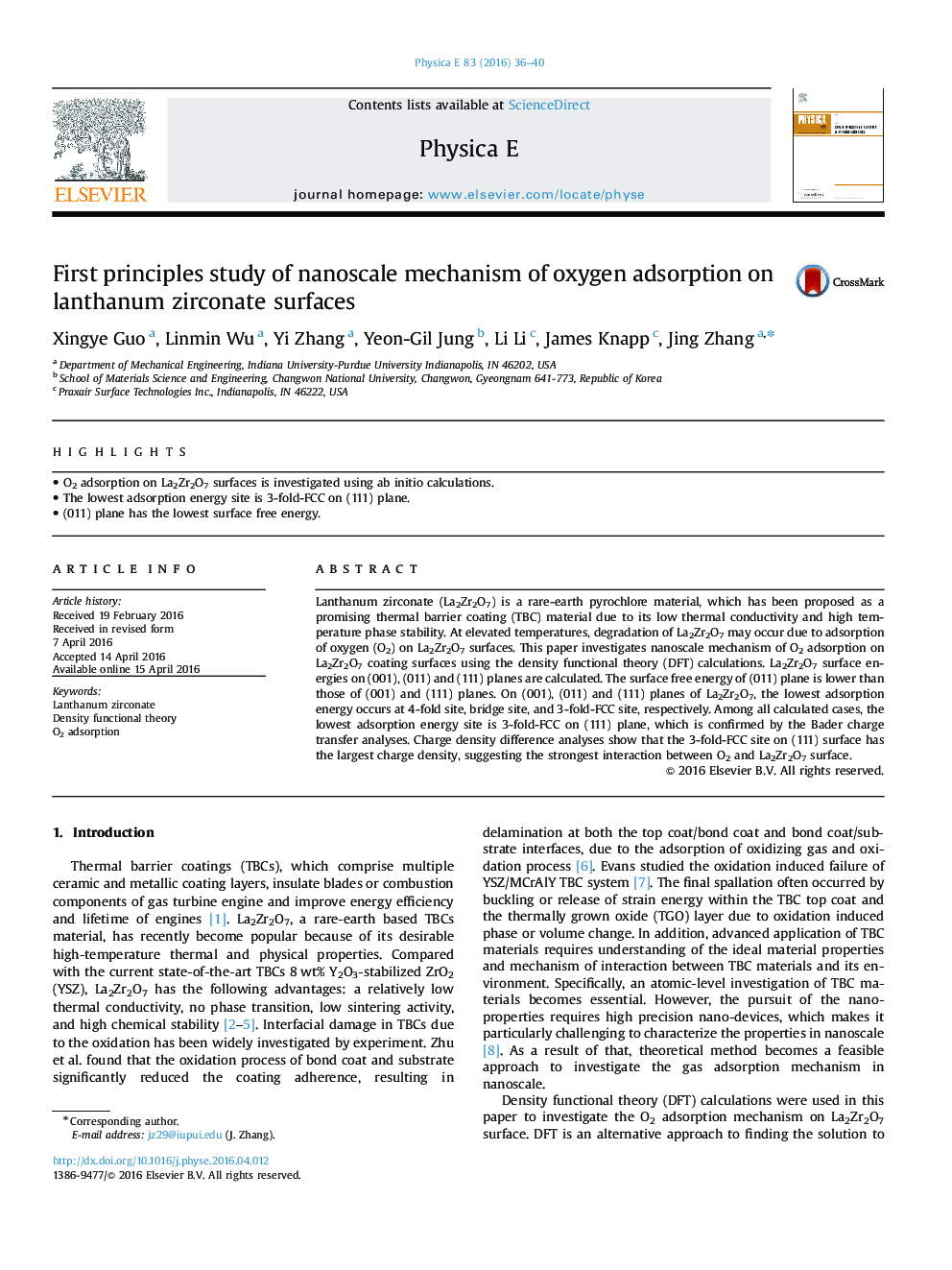| Article ID | Journal | Published Year | Pages | File Type |
|---|---|---|---|---|
| 1543742 | Physica E: Low-dimensional Systems and Nanostructures | 2016 | 5 Pages |
•O2 adsorption on La2Zr2O7 surfaces is investigated using ab initio calculations.•The lowest adsorption energy site is 3-fold-FCC on (111) plane.•(011) plane has the lowest surface free energy.
Lanthanum zirconate (La2Zr2O7) is a rare-earth pyrochlore material, which has been proposed as a promising thermal barrier coating (TBC) material due to its low thermal conductivity and high temperature phase stability. At elevated temperatures, degradation of La2Zr2O7 may occur due to adsorption of oxygen (O2) on La2Zr2O7 surfaces. This paper investigates nanoscale mechanism of O2 adsorption on La2Zr2O7 coating surfaces using the density functional theory (DFT) calculations. La2Zr2O7 surface energies on (001), (011) and (111) planes are calculated. The surface free energy of (011) plane is lower than those of (001) and (111) planes. On (001), (011) and (111) planes of La2Zr2O7, the lowest adsorption energy occurs at 4-fold site, bridge site, and 3-fold-FCC site, respectively. Among all calculated cases, the lowest adsorption energy site is 3-fold-FCC on (111) plane, which is confirmed by the Bader charge transfer analyses. Charge density difference analyses show that the 3-fold-FCC site on (111) surface has the largest charge density, suggesting the strongest interaction between O2 and La2Zr2O7 surface.
